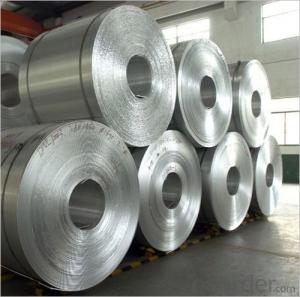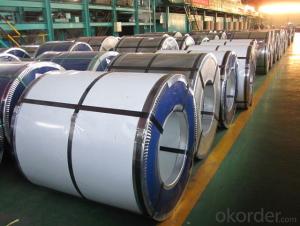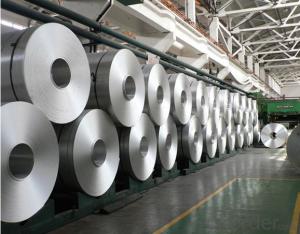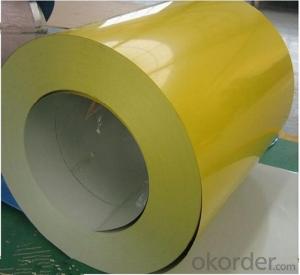Almond Aluminum Trim Coil
Almond Aluminum Trim Coil Related Searches
Led Light Bulbs For Ceiling Fixtures Led Lamps For Ceiling 42 In Ceiling Fan With Light Aluminum Coil Stock For Gutters Aluminum Foil For The Grill Hole Saw For Aluminum Plate Aluminum Tread Plate For Trailer Bow Plate For Aluminum Boat Aluminum Foil For Grow Room Aluminum Foil For Joint PainHot Searches
Stock Price For Aluminum Aluminum Coil Stock For Sale Aluminum Gutter Coil For Sale Used Aluminum Scaffolding For Sale 1/4 Aluminum Plate For Sale Aluminum Bar Stock For Sale Aluminum Round Stock For Sale Aluminum Diamond Plate For Sale Aluminum Scaffolding For Sale Craigslist 6061 Aluminum Plate For Sale Aluminum Dock Plate For Sale 7075 Aluminum Plate For Sale Aluminum Tread Plate For Sale Aluminum Checker Plate For Sale Aluminum Plate For Sale Near Me Plate Aluminum For Sale Aluminum Plate For Sale Aluminum Square Stock For Sale Aluminum Flat Stock For Sale Billet Aluminum Stock For SaleAlmond Aluminum Trim Coil Supplier & Manufacturer from China
Okorder.com is a professional Almond Aluminum Trim Coil supplier & manufacturer, offers integrated one-stop services including real-time quoting and online cargo tracking. We are funded by CNBM Group, a Fortune 500 enterprise and the largest Almond Aluminum Trim Coil firm in China.Hot Products
FAQ
- The maximum temperature that aluminum coils can withstand is influenced by several factors, which include the particular alloy of aluminum and the intended application of the coils. In general, aluminum has a melting point of approximately 660 degrees Celsius (1220 degrees Fahrenheit). Nevertheless, when it comes to aluminum coils employed in diverse industries like HVAC systems and electrical appliances, they are typically engineered to function within a temperature range of -30 to 150 degrees Celsius (-22 to 302 degrees Fahrenheit). These temperature boundaries guarantee that the aluminum coils maintain their structural integrity and avoid any notable degradation or harm. To ascertain the maximum temperature tolerance of the specific aluminum coils in question, it is crucial to refer to the manufacturer's specifications or guidelines.
- I am concerned about the environment so I collect empty aluminum cans off the street when I walk my dog. Right now I have 3 large garbage bags full of crushed aluminum can. The problem is... some of the cans have dirt on and in them. Some of thoroughly flattened ones may even have small pebbles embedded in them. Will these be accepted at the recycling facility? I'm guessing it doesn't matter because when they melt them any organic materials will burn away and any dirt particles or small pebbles will be separated from the molten aluminum. What do you think?
- The dirt won't be a problem, normally. The pebbles might, but I haven't heard any mention of this being a problem. Add: Aluminum melts at around 960 F, while most rocks won't. By that time, the dried up sugars and cigarette butts will have all burned off. You can melt aluminum in a cast iron frying pan, but I really don't recommend trying that: If a drop of water hits the molten aluminum it'll expand somewhere around 1700 times it's original volume, nearly instantly. This will be like a small bomb going off, and molten aluminum will spray all over. That's quite dangerous, even if you do have protective gear.
- The maximum coil weight for aluminum coils can vary depending on various factors such as the thickness and width of the coil, as well as the specific alloy being used. Generally, the maximum coil weight for aluminum coils ranges from around 5,000 to 25,000 pounds. However, it is important to note that these figures are approximate and can differ depending on the manufacturer's guidelines and equipment capabilities. Additionally, it is always recommended to consult the manufacturer or supplier for specific coil weight limitations to ensure safe handling and transportation.
- Aluminum coils have limitations on their width-to-thickness ratio. This ratio greatly influences the strength and performance of the coils. If the ratio is too high, problems like buckling, warping, or even coil failure can occur. The specific limitations on this ratio depend on factors such as the alloy composition, temper, and intended use of the coil. Different alloys and tempers have varying mechanical properties and can handle different ratios. Moreover, specific applications like roofing, automotive, or packaging may have their own requirements for the width-to-thickness ratio. Manufacturers usually provide guidelines and specifications for acceptable ratios based on their products. These guidelines ensure that coils are used within their intended capabilities and prevent issues caused by excessive ratios. Users and designers must consider these limitations and guidelines when selecting and using aluminum coils. Failing to adhere to these limitations can result in compromised performance, increased risk of damage, and potential safety concerns. Therefore, consulting the manufacturer's recommendations and industry standards is crucial for determining the appropriate width-to-thickness ratio for a given application.
- Yes, aluminum coils can withstand high temperatures. Aluminum has a relatively high melting point of approximately 660 degrees Celsius (1220 degrees Fahrenheit). This makes it suitable for applications that involve high-temperature environments. Additionally, aluminum has excellent thermal conductivity, which allows it to dissipate heat efficiently. This property makes aluminum coils commonly used in heat exchangers and various heating applications. However, it is important to note that the specific temperature limit for aluminum coils may vary depending on the specific alloy and application.
- There are several different coil handling methods for aluminum coils, each designed to ensure safe and efficient handling and storage of these valuable materials. 1. Manual Handling: This method involves using manual labor to physically lift and move the aluminum coils. It requires proper training and the use of personal protective equipment to avoid injury. Manual handling is suitable for smaller coils or when equipment is not available. 2. Forklift Handling: Forklifts are commonly used for handling aluminum coils. They are equipped with specially designed coil lifters or C-hooks to securely lift and transport the coils. Forklifts provide a more efficient and faster method for handling larger and heavier coils. 3. Coil Lifters: Coil lifters are specialized lifting devices that are designed specifically for handling aluminum coils. These lifters use a combination of clamps and hooks to securely grip the coil during lifting and transport. They are often used in conjunction with cranes or forklifts. 4. C-Hooks: C-hooks are another common method for handling aluminum coils. These hooks are attached to cranes or other lifting equipment and are designed to cradle the coil securely. C-hooks allow for easy and controlled movement of the coil, and they are suitable for both small and large coils. 5. Coil Tippers: Coil tippers are used to tilt the coils horizontally or vertically for easier loading or unloading. This method helps to reduce the risk of damage to the coils during handling and improves efficiency by allowing coils to be easily placed on or removed from racks or pallets. 6. Coil Carriers: Coil carriers are specialized trailers or trucks designed to transport aluminum coils. They have built-in coil cradles or beds that securely hold the coils during transportation. These carriers often have adjustable supports to accommodate different coil sizes and prevent shifting during transit. Overall, the choice of coil handling method depends on the size, weight, and specific requirements of the aluminum coils. It is important to use the appropriate handling method to ensure the safety of workers, prevent damage to the coils, and maintain the quality of the aluminum.
- Using aluminum coils in various applications offers several advantages. To begin with, aluminum coils are known for their lightweight properties, distinguishing them from materials like copper or steel. Their reduced weight makes handling and transportation easier, ultimately decreasing the overall weight of the system or product in which they are utilized. Moreover, their lightweight nature contributes to simplified installation and maintenance procedures. Additionally, aluminum coils exhibit exceptional corrosion resistance. They naturally develop a protective oxide layer on their surface, preventing further oxidation and corrosion, even in harsh environments. This quality renders them particularly suitable for outdoor applications or areas exposed to high humidity or chemicals. Furthermore, aluminum coils possess high thermal conductivity, enabling efficient heat transfer. This characteristic proves valuable in heating, ventilation, and air conditioning (HVAC) systems, as it enhances energy efficiency and reduces overall energy consumption. In addition, aluminum coils demonstrate remarkable flexibility, allowing them to be easily formed into various shapes and sizes. This flexibility grants designers greater freedom and customization options, making aluminum coils suitable for a wide range of applications. They can be effortlessly bent, cut, or shaped to meet specific requirements without compromising structural integrity. Lastly, aluminum coils are cost-effective. Aluminum is abundant and readily available, making it more affordable compared to other materials. Moreover, its lightweight nature reduces transportation costs, while its corrosion resistance eliminates the need for frequent maintenance and replacements, resulting in long-term cost savings. To summarize, the advantages of using aluminum coils encompass their lightweight properties, exceptional corrosion resistance, high thermal conductivity, flexibility, and cost-effectiveness. These characteristics have established aluminum coils as a popular choice in various industries, including construction, automotive, aerospace, and HVAC.
- My budgies took at bath in an aluminum pie tin today. At first they bit it just because it was their first time. Should I be worried that they might get poisoned?
- poisoned by what? if aluminum was poisonous why are aluminum foil and aluminum cooking utensils legal?














































